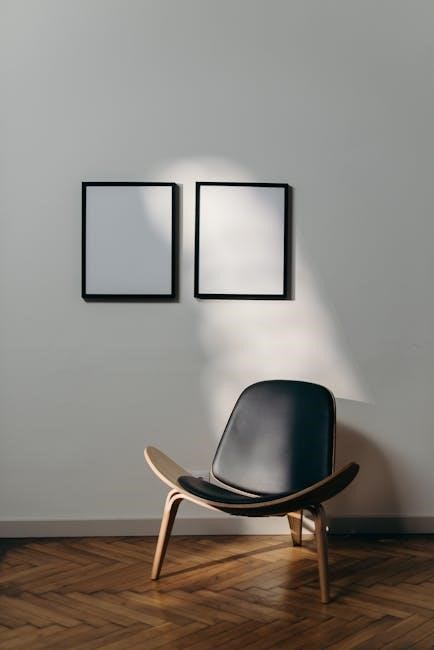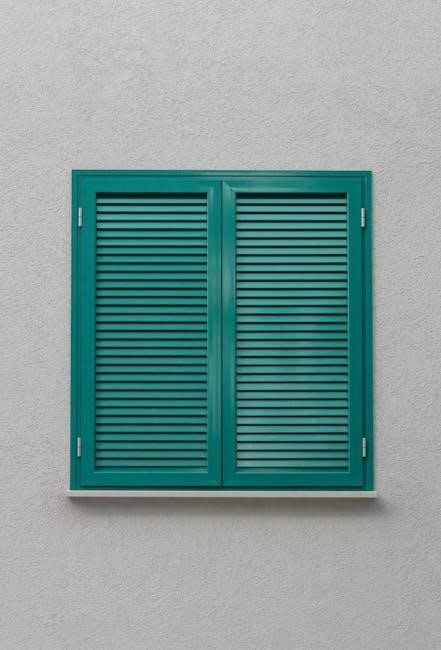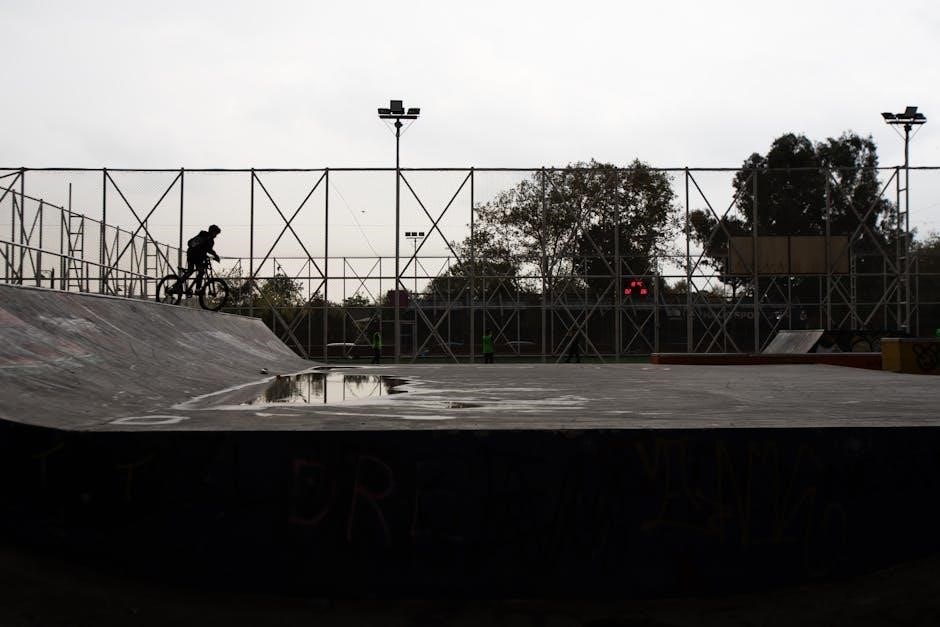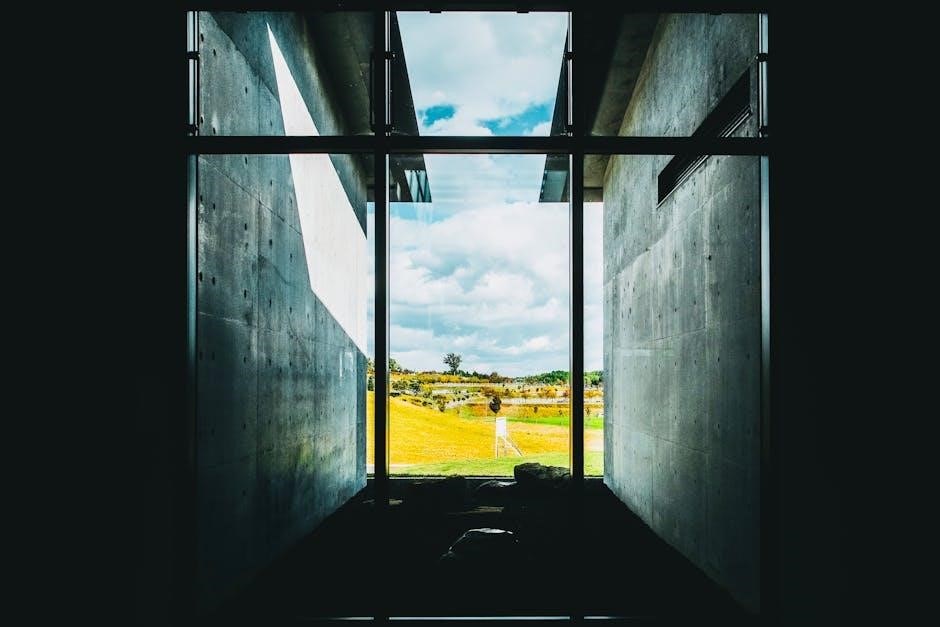Choosing the right BMX frame size is crucial for comfort, performance, and safety. This guide covers key measurements and provides charts to help riders find their perfect fit.
1.1 Importance of Proper Frame Size
A properly sized BMX frame ensures optimal comfort, performance, and safety. It allows for better control, efficiency, and maneuverability, whether racing or freestyling. A well-fitted frame prevents discomfort and potential injuries, enhancing the riding experience. Understanding the importance of frame size helps riders maximize their skills and enjoy their bike to the fullest. This guide provides essential insights and tools to determine the perfect fit, ensuring every ride is enjoyable and safe.
1.2 Overview of Key Measurements

Key measurements for BMX frames include top tube length, wheel size, seat tube height, and standover clearance. These dimensions ensure proper fit and performance. Top tube length affects reach and comfort, while wheel size impacts handling and speed; Seat tube height and standover clearance ensure safety and control. Understanding these measurements helps riders choose a frame that suits their height, riding style, and preferences. This guide provides detailed insights into each measurement, helping riders make informed decisions for their ideal BMX setup.

Key Measurements for BMX Frames
Key measurements include top tube length, wheel size, seat tube height, and standover clearance. These factors influence comfort, handling, and control, ensuring optimal performance and safety.
2.1 Top Tube Length

Top tube length is a critical measurement for BMX frames, directly impacting comfort and control. It is measured from the head tube to the seat tube and varies based on rider height and style. A longer top tube provides more reach, while a shorter one offers better maneuverability. Charts typically recommend top tube lengths ranging from 18″ to 22″ for most riders. Proper fit ensures optimal performance, whether racing or freestyling. Using size charts or calculators helps determine the ideal length for your specific needs and preferences.
2.2 Wheel Size and Compatibility
Wheel size is a key factor in BMX frame compatibility, with standard sizes ranging from 20″ to 24″. Smaller wheels (20″) are common for freestyle and race bikes, offering agility and maneuverability. Larger wheels (24″) are typically used for cruiser BMX bikes, providing stability and speed for taller riders. Compatibility ensures proper fit and performance, as frames are designed for specific wheel sizes. Riders should check frame specifications to ensure their chosen wheel size aligns with the bike’s design, optimizing both comfort and functionality for their preferred riding style.
2.3 Seat Tube Height and Standover Clearance
Seat tube height and standover clearance are critical for a comfortable and safe riding experience. The seat tube height should align with the rider’s inseam, ensuring proper leg extension and clearance when standing over the frame. Standover clearance, typically 1-2 inches, allows for safe dismounts and maneuverability. These measurements vary by frame size and riding style, with freestyle bikes often having shorter standover clearance for tricks, while cruisers may prioritize comfort and stability. Proper fit ensures optimal performance and safety, making these measurements essential for choosing the right BMX frame.
2.4 Head Tube Angle and Fork Rake
The head tube angle and fork rake significantly influence a BMX bike’s handling and maneuverability. The head tube angle, typically between 73° and 76°, affects the bike’s responsiveness. A steeper angle (closer to 76°) enhances stability at high speeds, ideal for racing, while a slacker angle (around 73°) improves control during tricks in freestyle riding. Fork rake, the offset of the fork from the steering axis, impacts turning radius and stability. Longer rake improves stability, while shorter rake allows for tighter turns, making it a key consideration based on riding style and performance needs.
Factors Influencing Frame Size Choice
Rider height, weight, age, skill level, and riding style are key factors in selecting the right BMX frame size for optimal comfort and performance.
3.1 Rider Height and Weight
Rider height and weight are primary factors in determining the ideal BMX frame size. Height directly influences the required standover clearance and top tube length for comfort and control. Generally, taller riders benefit from longer frames, while shorter riders prefer more compact sizes. Weight also plays a role, as heavier riders may require sturdier frames for durability. Using a height-to-wheel size chart can help match your body dimensions to the appropriate frame size. However, personal preference and riding style can sometimes override these general recommendations.
3.2 Age and Skill Level
Age and skill level significantly impact BMX frame size selection. Younger riders, especially children, often require smaller frames for easier control and maneuverability. As riders grow and gain experience, they can transition to larger frames. Skill level also plays a role, as advanced riders may prefer frames tailored to their specific riding style, such as freestyle or racing. Beginner riders benefit from frames with more forgiving geometries, while experienced riders might opt for specialized sizes. Age and skill level guide the choice of frame size to ensure optimal performance and comfort.
3.3 Riding Style (Race, Freestyle, Cruiser)
Riding style significantly influences BMX frame size selection. Racers prefer compact frames with shorter top tubes for speed and agility. Freestyle riders opt for slightly longer frames for better control during tricks. Cruiser bikes, designed for comfort and stability, often feature larger frames and wheels. The frame size must align with the rider’s style to ensure optimal performance and comfort. Whether racing, performing stunts, or cruising, the right frame size enhances the riding experience and allows riders to excel in their chosen discipline.

How to Measure Yourself for a BMX Bike
Measuring yourself for a BMX bike ensures proper fit and comfort. Start with inseam and standover height, then calculate reach and comfort based on your riding style.
4.1 Measuring Inseam and Standover Height
Measuring inseam and standover height is essential for determining the right BMX frame size. Inseam is measured from the floor to the crotch while standing barefoot. Standover height is the clearance between the rider’s crotch and the bike’s top tube when standing over the frame. Proper inseam ensures the seat height is correct, while adequate standover clearance prevents discomfort and improves control. These measurements help riders choose a frame that fits their body proportions and riding style, ensuring comfort and performance.
4.2 Calculating Reach and Comfort
Calculating reach and comfort involves ensuring the bike’s top tube length and handlebar placement align with your body proportions. Reach is the distance from the saddle to the handlebars, affecting posture and control. A proper fit allows you to comfortably grip the bars without straining or feeling cramped. Test riding helps confirm comfort, as personal preference plays a role. Correct reach ensures efficient pedaling and maneuverability, while improper fit can lead to discomfort or reduced performance. Balancing reach and comfort is key to an enjoyable riding experience.

BMX Size Chart and Calculator
Use our BMX size chart and calculator to determine the ideal frame and wheel size based on height and riding style. Find your perfect fit effortlessly today.
5.1 Universal Height-to-Wheel Size Chart
A universal height-to-wheel size chart provides a generalized guide to help riders determine the appropriate wheel size and frame size based on their height. This chart considers factors like height, age, and riding style to recommend the most comfortable and efficient setup. While it serves as a starting point, personal preferences and brand-specific variations may influence the final choice. Use this chart to narrow down your options and ensure a better fit for optimal performance and comfort on your BMX bike.
5.2 Top Tube Length Recommendations
Top tube length is a critical factor in determining comfort and control on a BMX bike. Recommendations are typically based on the rider’s height and style, with longer tubes suited for taller riders or specific disciplines like racing. While universal charts provide a solid starting point, personal preference and brand-specific variations can influence the final choice. Consulting the chart helps narrow down options, ensuring the best fit for optimal performance and comfort.
5.3 Using an Interactive Size Calculator
An interactive BMX size calculator simplifies the process of finding the right frame by considering height, riding style, and sometimes weight. These tools provide personalized recommendations, helping riders narrow down options quickly. While they offer a solid starting point, it’s important to consider personal preferences and brand-specific variations. Using a calculator ensures a more informed decision, but test riding remains crucial for final confirmation. This modern approach makes sizing more accessible and efficient for riders of all levels and disciplines.

Understanding BMX Bike Categories
BMX bikes are categorized into Race, Freestyle, and Cruiser, each designed for specific riding styles and preferences, ensuring the right fit for every rider’s needs.

6.1 Race BMX vs. Freestyle BMX
Race BMX bikes are designed for speed and agility, typically featuring lightweight frames and shorter wheelbases for optimal performance on tracks. They prioritize efficiency and quick handling.
Freestyle BMX bikes, in contrast, are built for durability and versatility, with stronger frames and longer wheelbases to withstand tricks and stunts. They offer stability and control for creative riding styles.
6.2 Cruiser BMX and Its Unique Features
Cruiser BMX bikes are designed for comfort and stability, often featuring larger 24-inch wheels. They are ideal for casual riding and offer a relaxed geometry, making them suitable for taller riders. The longer frame and wheelbase provide a smooth ride, while the larger wheels enhance roll-over ability on various terrains. Cruisers are perfect for cruising on bike paths, beaches, or parks, emphasizing comfort and durability over speed or tricks. Their unique design caters to riders seeking a laid-back, enjoyable experience without the demands of high-performance racing or freestyle riding.

Tips for Choosing the Right Frame Size
Test ride different sizes, consider personal preferences, and check brand-specific sizing variations to ensure optimal comfort and performance for your riding style and height.
7.1 Test Riding Different Sizes
Test riding different BMX frame sizes is essential to ensure optimal comfort and performance. It allows you to assess how the bike feels in terms of fit, handling, and maneuverability. When test riding, pay attention to standover clearance, reach, and overall stability. Wear appropriate riding gear and start with a size recommended by the chart. This hands-on approach helps confirm the right size, ensuring a better riding experience tailored to your preferences and style.
7.2 Considering Personal Preference
Personal preference plays a significant role in choosing the right BMX frame size. Riders may prioritize comfort, maneuverability, or aesthetics based on their style. While size charts provide a starting point, individual preferences for reach, standover clearance, and handling can influence the final decision. Some riders may prefer a slightly larger or smaller frame than recommended for better control or confidence. Ultimately, personal comfort and confidence on the bike are key to an enjoyable riding experience, making it important to balance chart recommendations with personal feel and style.
7.3 Brand-Specific Sizing Variations
BMX frame sizes can vary between brands due to differences in frame geometry and design philosophies. Some brands may offer slightly longer or shorter top tubes for the same wheel size, catering to specific riding styles. Additionally, seat tube heights and standover clearances may differ, affecting fit. It’s essential to consult the brand’s size chart and consider their unique measurements. Test riding a bike, if possible, ensures compatibility with your body and riding preferences. Brand-specific variations highlight the importance of researching before making a purchase to find the best fit for your needs and style.
Common Mistakes to Avoid
Common mistakes include buying a bike too small or large, ignoring standover clearance, and overlooking wheel size impact, all of which affect comfort and performance.
8.1 Buying a Bike Too Small or Too Large
Buying a BMX bike that is too small or too large can lead to discomfort, poor performance, and safety issues. A bike that is too small may restrict movement, while one that is too large can be difficult to control. Riders should use size charts and consider factors like inseam, standover clearance, and riding style to ensure proper fit. Test riding different sizes is highly recommended to avoid this common mistake, as it allows riders to assess comfort and handling before making a purchase.
8.2 Ignoring Standover Clearance
Ignoring standover clearance is a common mistake that can lead to discomfort and safety hazards. Standover clearance refers to the space between the rider’s inseam and the top tube of the bike. Proper clearance ensures safe dismounts and maneuverability. Riders should aim for 1-2 inches of clearance for optimal comfort and control. Neglecting this measurement can result in a poor fit, making the bike difficult to handle and increasing the risk of injury. Always measure standover clearance to ensure a safe and enjoyable riding experience.
8.3 Overlooking Wheel Size Impact

Overlooking wheel size impact is a critical mistake when selecting a BMX frame. Wheel size affects handling, stability, and overall performance. Larger wheels, such as 20-inch or 24-inch, suit taller riders and cruising, while smaller wheels (12-18 inches) are better for tricks and younger riders. Ignoring wheel size can lead to poor fit and discomfort. Always consult a universal height-to-wheel size chart to ensure compatibility with your height and riding style. Proper wheel size ensures optimal control and safety, making it essential for a enjoyable and efficient ride.
How BMX Frames Are Measured
BMX frames are measured by top tube length, wheelbase, and chainstay length. Seat tube and head tube measurements also play a role in sizing and fit.
9.1 Top Tube Length Measurement
The top tube length is a critical measurement for BMX frames, directly impacting the bike’s fit and performance. It is measured horizontally from the center of the head tube to the center of the seat tube. This measurement determines the bike’s reach and comfort, with longer tubes suiting taller riders or those preferring a more stretched riding position. While standard charts provide guidelines, personal preference and riding style often influence the ideal top tube length. Accurate measurement ensures optimal control and comfort, making it essential for riders of all levels.
9.2 Wheelbase and Chainstay Length
Wheelbase and chainstay length are essential measurements for BMX frames, influencing stability, maneuverability, and handling. The wheelbase is the distance between the front and rear wheels, while the chainstay length is the distance from the rear axle to the bottom bracket. Shorter chainstays provide better acceleration and tighter turning, while longer ones offer stability. Wheelbase varies by bike category, with race bikes typically having shorter chainstays for speed and freestyle bikes having slightly longer ones for durability. Accurate measurement ensures optimal performance and rider control, tailored to specific riding styles and preferences.
9.3 Seat Tube and Head Tube Measurements
Seat tube height and head tube measurements are critical for proper fit and handling. The seat tube height is measured from the bottom bracket to the top of the seat tube, determining standover clearance. Standover clearance ensures safety and comfort, typically around 1-2 inches. The head tube angle, usually steeper in BMX bikes (75-76 degrees), affects handling and stability. Fork rake, the fork’s offset, also impacts turning. These measurements vary by bike category, with race bikes favoring steeper angles for speed and freestyle bikes slightly more relaxed for maneuverability. Accurate measurements ensure optimal performance and rider comfort.
UCI Regulations and Standards
UCI regulations specify frame size requirements for racing events, ensuring compliance with standardized measurements and safety guidelines for competitive BMX racing.
10.1 UCI-Specified Frame Sizes
The UCI sets standardized frame size regulations for BMX racing, ensuring fair competition and safety. These specifications include precise measurements for top tube length, wheel size, and other critical components. Riders must comply with these guidelines to participate in UCI-sanctioned events. The regulations also account for variations in rider height and category, providing a framework for optimal performance and safety. Adhering to UCI standards ensures bikes meet strict safety and performance criteria, making races fair and enjoyable for all participants.
10.2 Compliance for Racing Events
Compliance with UCI regulations is essential for BMX racing events. Frames must meet specific size and safety standards to ensure fair competition and rider safety. The UCI enforces strict guidelines on frame dimensions, wheel sizes, and equipment to maintain a level playing field. Riders must ensure their bikes adhere to these rules to avoid disqualification. Compliance not only ensures eligibility but also guarantees that bikes are optimized for performance and safety in competitive settings. Always verify your frame’s specifications against UCI standards before participating in sanctioned races.
Proper frame size ensures comfort, performance, and safety. Use size charts, test ride bikes, and consider personal preferences to find your ideal fit for an enhanced riding experience.
11.1 Summary of Key Points
Proper BMX frame size is essential for comfort, performance, and safety. Key factors include top tube length, wheel size, and standover clearance. Rider height, weight, age, and riding style influence frame choice. Use size charts and calculators for accurate fitting. Test riding ensures comfort and compatibility. Personal preferences and brand variations should be considered. UCI regulations apply for racing. Prioritize a balanced fit for optimal control and enjoyment. Refer to detailed guides and resources for specific needs. Ensure proper fitment for an enhanced riding experience tailored to your preferences and requirements.
11.2 Encouragement to Use the Guide
Using this BMX frame size guide ensures a perfect fit, enhancing comfort, performance, and safety. It provides comprehensive tools like charts and calculators to simplify your decision-making process. Whether you’re a seasoned rider or a beginner, this guide offers tailored recommendations for your height, riding style, and preferences. By following the tips and resources provided, you’ll confidently select the ideal frame size, optimizing your riding experience. Take advantage of this detailed guide to make an informed choice and enjoy a more enjoyable and efficient ride.
Additional Resources
Explore links to detailed size charts, interactive calculators, and UCI regulations for BMX frames. These resources help ensure you find the perfect fit for your riding needs.
12.1 Links to Size Charts
Access detailed BMX size charts, including universal height-to-wheel size guides and top tube length recommendations for race and freestyle bikes. These charts provide generalized sizing based on rider height, helping you determine the ideal frame size. Additionally, explore interactive calculators that factor in personal preferences and riding styles. For accuracy, cross-reference multiple charts, as sizing can vary slightly between brands. These resources are essential for ensuring a comfortable and performance-optimized fit, whether you’re a seasoned rider or just starting out. Use them to make informed decisions for your next BMX purchase.
12.2 Recommended Brands and Models
Explore top BMX brands like Mongoose, Redline, and GT, known for their high-quality frames and precise sizing. Models such as the Mongoose Legion series offer excellent fit and performance for freestyle riders, while Redline bikes are ideal for racing. GT BMX frames provide versatile options for both race and casual riding. These brands ensure durability and comfort, catering to various riding styles. Check reviews and test rides to find the best fit for your needs. Use the size charts to match your height and style with the perfect model for an optimal riding experience.
